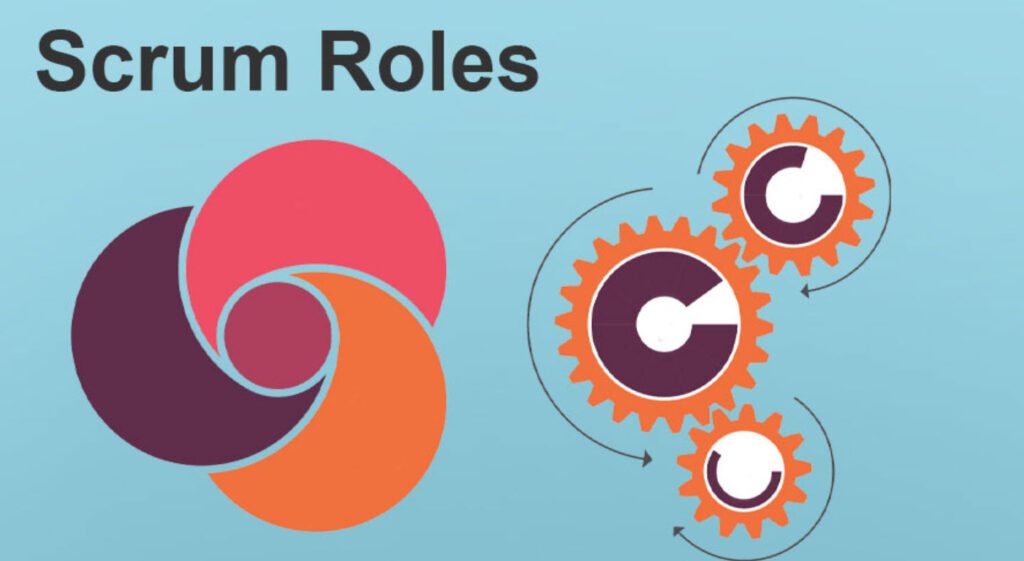
In the realm of Agile software development, Scrum stands out as a versatile and effective framework that empowers teams to deliver high-quality products through collaboration, flexibility, and iterative progress. At the heart of a successful Scrum team lies a diverse ensemble of roles, each playing a crucial part in orchestrating the development process.
Let’s explore the distinct roles commonly found in a Scrum team, shedding light on their responsibilities, interactions, and contributions to the agile symphony.
1. Scrum Master: Guiding the Agile Symphony
The Scrum Master assumes the role of conductor and coach, wielding their expertise in Scrum to guide the team towards success. More than a traditional project manager, the Scrum Master is a facilitator who fosters an environment of collaboration, innovation, and continuous improvement.
With a keen eye on Scrum practices, the Scrum Master ensures that the team adheres to Agile principles, identifies and resolves impediments, and empowers team members to excel. Their unwavering focus on enhancing the team’s effectiveness and productivity propels the entire development process forward.
2. Analysts: Crafting the User Story Narrative
Analysts collaborate closely with the Product Owner and Scrum Master to shape the backbone of the development journey: the user stories. These user stories capture the essence of customer needs, translating them into actionable requirements for the development sprints.
Analysts leverage their analytical prowess to refine and fine-tune user stories, ensuring they align seamlessly with the project’s objectives and user expectations. Their diligent work sets the stage for the team to embark on the development voyage with clarity and purpose.
3. Architects: Building the Blueprint of Innovation
Architects step into the spotlight during the design sprint, often referred to as “sprint zero.” Their role involves crafting the architectural blueprint that underpins the application’s design, ensuring it aligns with the user stories’ requirements. By meticulously designing the application’s architecture, architects lay the foundation for a robust and scalable product.
Their intricate work allows the development team to embark on a harmonious journey towards translating concepts into code.
4. Designers: Weaving the User Experience Tapestry
Designers are the artistic translators of the Scrum team, transforming user desires into tangible user interfaces and experiences. Their role encompasses three critical translations: capturing user desires for the Product Owner, conveying product features to users, and communicating user experiences and interfaces to engineers.
With a deep understanding of aesthetics and usability, designers infuse the product with a seamless and engaging user experience, enriching its value and appeal.
5. Engineers and Developers: Crafting the Digital Masterpiece
Engineers, including Lead Engineers and Developers, are the master crafters who bring the digital masterpiece to life. Armed with code and creativity, they diligently transform user story requirements into functional features.
Through coding and development, they ensure that the application’s functionalities align with the envisioned user experience. Their dedication and skill lay the bricks that construct the final product, marking the culmination of the team’s collective efforts.
6. Testers and Quality Assurance (QA) Leads: Guardians of Excellence
Testers and QA Leads assume the mantle of quality guardians, meticulously evaluating the application’s adherence to acceptance criteria. Their meticulous testing procedures validate that the product aligns with user stories and meets the standards outlined in the Definition of Done (DoD).
With an eagle eye for detail, testers provide the proof that the product is ready for delivery, offering an essential checkpoint before the product reaches the hands of end-users.
In the intricate dance of Agile software development, each role in the Scrum team harmonizes to create a symphony of innovation, collaboration, and customer-centricity. The unique contributions of Scrum Masters, Analysts, Architects, Designers, Engineers, and Testers combine to orchestrate a dynamic and iterative development process.
As businesses continue to embrace Agile methodologies to drive value and adapt to evolving market landscapes, the ensemble of Scrum roles stands as a testament to the power of collaborative ingenuity in the pursuit of software excellence.
You may also like:- Top 10 CSS Libraries for Your Next App
- How To Fix the Crowdstrike/BSOD Issue in Microsoft Windows
- MICROSOFT is Down Worldwide – Read Full Story
- Windows Showing Blue Screen Of Death Error? Here’s How You Can Fix It
- A Guide to SQL Operations: Selecting, Inserting, Updating, Deleting, Grouping, Ordering, Joining, and Using UNION
- Top 10 Most Common Software Vulnerabilities
- Essential Log Types for Effective SIEM Deployment
- How to Fix the VMware Workstation Error: “Unable to open kernel device ‘.\VMCIDev\VMX'”
- Top 3 Process Monitoring Tools for Malware Analysis
- CVE-2024-6387 – Critical OpenSSH Unauthenticated RCE Flaw ‘regreSSHion’ Exposes Millions of Linux Systems








